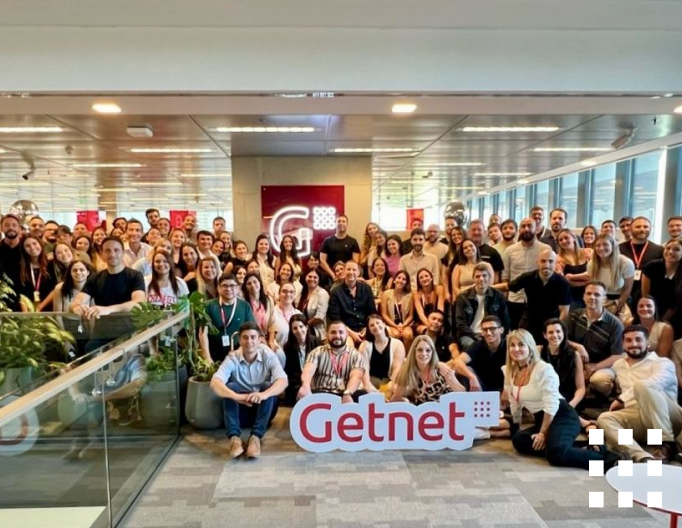Traditionally, lending has required structured, conservative underwriting processes. In particular, merchant lending has been characterised by collateral-backed loans, lengthy application processes, rigid payment processes and limited flexibility and time to cash.
While reliable for well-established businesses, in emerging markets this model has excluded SMEs and microbusinesses which lack formal credit histories or collateral. In Latin America, access to capital remains highly restricted – more than 50% of SMEs in the region cite lack of financing as a key barrier to growth. Further, high interest rates and economic headwinds have limited traditional bank financing in the region.
These challenges have sparked innovation, and there is now a new generation of solutions which offer more flexibility, accessibility and speed. As a result, SMEs can choose the route to capital that best matches their specific needs and growth trajectories.
Getnet has been a key driver of this transformation; evolving its lending proposition for Latin America and beyond by embedding credit into its payments ecosystem.
The evolution of finance solutions
Merchant lending has emerged as a dynamic arena where payment service providers, e-commerce platforms and fintechs are reshaping how credit is underwritten, delivered, and repaid. The shortcomings of traditional models gave rise to a new generation of lending model, many of which are embedded financing solutions.
Embedded lending solutions remove the need for merchants to actively seek out credit as a separate activity. Instead, financing becomes part of the services they already use to run their business. While not all solutions are inherently embedded, they are more effective once embedded through a third-party platform able to integrate into existing workflows.
Embedded lending models are especially valuable in countries like Brazil, where millions of small and medium merchants are underbanked but generate consistent card sales. It gives them access to working capital for inventory, payroll, and equipment – without needing to leave their business or fill out paperwork.
New financing options are redefining what is possible and fundamentally transforming how businesses can operate, scale, and compete.


Buy Now Pay Later (BNPL)
When a small business uses BNPL when purchasing goods or services to support their growth, the BNPL provider verifies the SME’s identity and assesses its creditworthiness using alternative data and AI-driven credit scoring. Once approved, the BNPL provider pays the provider for the goods or service up-front so they receive immediate payment. The repayment schedule is managed by the BNPL platform, automatically collecting payments, sending reminders and absorbing credit risk.
BNPL platforms use APIs for seamless integration with eCommerce and Point of Sale (POS) systems, cloud databases for secure data storage, and machine learning (ML) for real-time fraud detection and risk management. This ensures a smooth, automated experience for all involved.
Dynamic Working Capital (DWC)
Dynamic Working Capital (DWC) financing refers to a category of innovative financing tools that give businesses flexible access to cash based on real-time financial activity, rather than fixed-term loans.
Instead of borrowing a fixed amount of money (like in a traditional loan), DWC financing gives businesses access to money when they need it. As sales and purchases go up or down, the amount of financing available can increase or decrease too.
DWC financing leverages digital platforms to seamlessly connect with a company's financial systems. Advanced analytics and automation tools monitor key metrics and automatically recommend or execute actions such as adjusting payment terms or offering discount rates. This helps companies to optimise cash flow and reduce the time money is tied up in operations.
Merchant Cash Advance (MCA)
Merchant Cash Advance provides a business with a lump sum of cash upfront which is repaid through a fixed percentage of the business’s future credit and debit card sales.
Adelanto de Ventas, for example, allows eligible Mexican merchants to receive upfront capital based on their sales history, helping them to invest in and grow their business.
MCA platforms leverage APIs to connect with POS systems and business bank accounts, enabling real-time access to sales data and automated repayment. Furthermore, AI and machine learning assess credit risk and enable fast funding decisions, while cloud infrastructure ensures secure data storage and smooth, automated processing. This technology-driven approach delivers quick, flexible financing aligned with a business’s actual sales performance.
Revenue-Based Financing (RBF)
Revenue-Based Financing is a funding model where a business receives capital in exchange for a percentage of its ongoing gross revenues until a predetermined total repayment amount is reached.
Unlike traditional loans, RBF does not require collateral or equity dilution, and repayments are not fixed – they fluctuate in line with the company’s monthly or quarterly revenue. The repayment continues until a pre-agreed cap is reached, usually a multiple of the original investment, such as 1.5x to 3x. This structure allows businesses, especially those with recurring or growing revenues, to access flexible funding that adjusts to their cash flow, making it an attractive option for companies seeking growth without giving up ownership or taking on rigid debt obligations.
Digital business credit cards
Digital business credit cards work by providing businesses with virtual or physical cards linked to a central account, allowing employees to make purchases within set limits. These are credit cards designed for businesses, issued and managed digitally, often through fintech platforms or apps.
These cards integrate with expense management platforms via APIs, enabling real-time transaction tracking, automatic receipt collection, and customisable spending controls. Enhanced security features – such as unique virtual card numbers for each transaction, instant card deactivation, and AI-driven fraud detection – help prevent unauthorised use. Cloud-based systems ensure secure data storage and seamless integration with accounting software, streamlining financial management and improving visibility over company spending.
Getnet: Empowering SME growth through embedded lending
Getnet operates at the intersection of payments, data, and merchant relationships. By embedding lending into its acquiring services, Getnet is playing a key role in democratising credit access, especially for SME’s, in Latin America and beyond.
Key capabilities include:
• Pre-approved loans via POS data (DWC): Getnet uses transaction volume and sales frequency to underwrite pre-approved loans for merchants – especially micro and small businesses without traditional credit files.
• Automated repayment via settlements: Loans are repaid through daily or weekly deductions from settlement amounts as a percentage of the merchant sales, creating a seamless, low-risk experience for both parties.
• Scalability through Santander: As part of one of the largest banks in the region, Getnet can scale credit deployment while maintaining robust compliance and risk frameworks.
Offering embedded financial solutions was important for Getnet, due to its value for in bridging deep financial inclusion gaps and structural barriers to credit for merchants across Latin America, especially SMEs. Unlike in developed markets, where embedded finance is often about convenience, in Latin America it is a vital economic enabler.
The rise of embedded finance in empowering SMEs
The evolution from traditional merchant lending to embedded finance reflects a broader transformation in how credit is delivered and consumed. What was once a complex, exclusionary process has become intuitive, data-driven, and personalised.
Getnet's model illustrates the power of embedded finance to unlock growth for small merchants – especially in underserved regions like Latin America. By integrating lending into the everyday flow of business, Getnet and similar players are not only improving access to capital but redefining what it means to bank a business.
As the line between financial services and technology continues to blur, the future of lending will be written in the background of the digital tools merchants use every day.





























